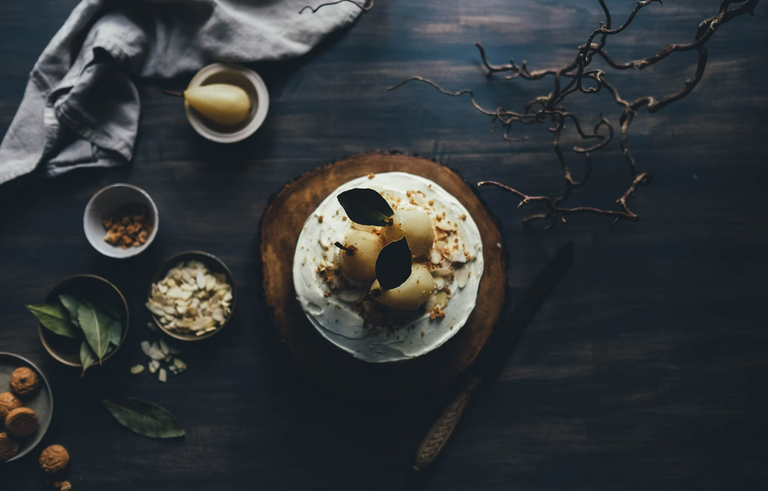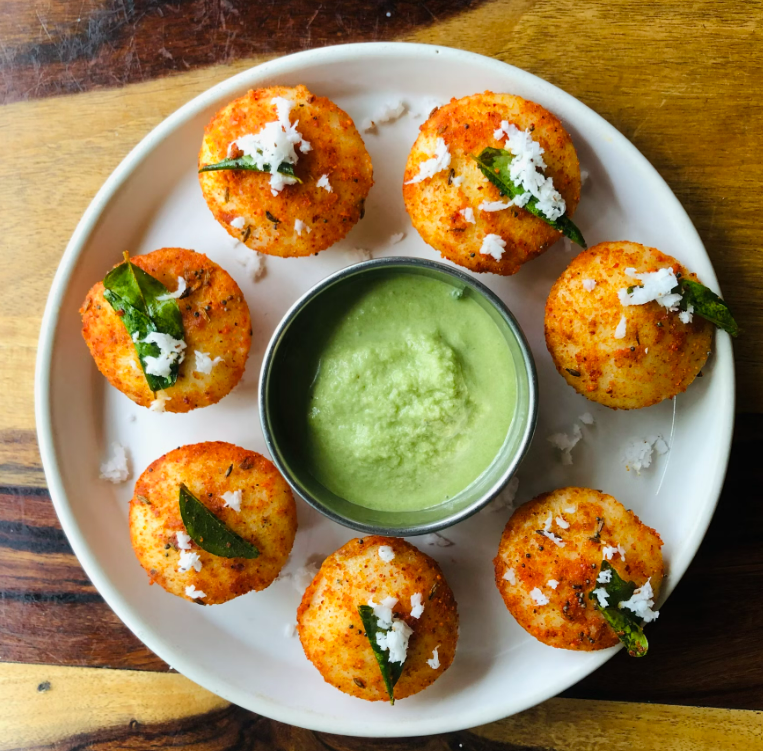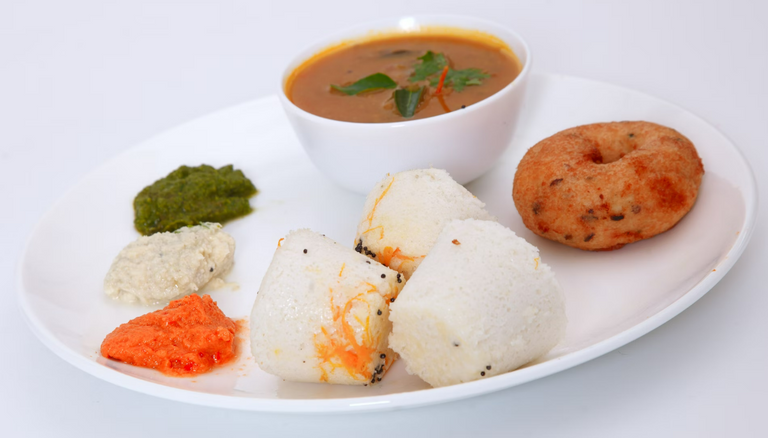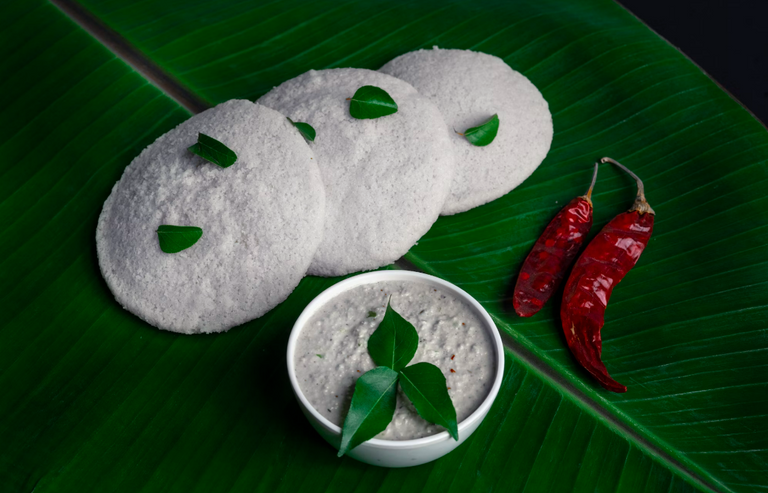Idli is a soft, fluffy, and nutritious South Indian breakfast made from fermented rice and urad dal (black gram). These steamed rice cakes are incredibly light, easy to digest, and packed with protein, making them a perfect meal for any time of the day.
If you've ever wondered how to make perfectly soft idlis at home, this detailed guide will take you through each step, from choosing the right ingredients to getting that ideal texture! Let’s get started.
🌿 Why Idli is the Perfect Healthy Meal?
✔ Light & Easy to Digest – Made from fermented batter, rich in probiotics.
✔ No Oil, No Frying – A completely steamed dish, making it super healthy.
✔ Gluten-Free & Vegan-Friendly – Naturally free from gluten & adaptable for a plant-based diet.
✔ High in Protein & Fiber – Urad dal adds protein, and rice provides energy.
✔ Great for Weight Loss – Low in calories yet filling and satisfying.
🥣 Ingredients for Idli Batter
To make the perfect idli, you need the right ratio of rice to dal. The standard ratio is 4:1 (Rice:Urad Dal).
Main Ingredients:
✔ 2 cups idli rice (parboiled rice, or you can use regular rice)
✔ ½ cup urad dal (whole or split black gram, skinless)
✔ 1 tsp fenugreek seeds (methi seeds) (for softness and flavor)
✔ Salt to taste
✔ Water as needed
For Fermentation (Optional but Recommended):
✔ ½ cup poha (flattened rice) – Helps in fermentation and makes idlis extra soft.
✔ ½ tsp baking soda (only if needed for fermentation boost in cold weather).
🔥 Step-by-Step Recipe for Soft & Fluffy Idlis
Step 1: Soaking the Ingredients
🔹 Wash and soak idli rice in a large bowl for at least 6-8 hours.
🔹 In a separate bowl, wash and soak urad dal + fenugreek seeds for at least 4-5 hours.
🔹 If using poha, soak it 30 minutes before grinding.
💡 Tip: Soaking overnight is best for better fermentation.
Step 2: Grinding the Batter
🔹 Drain excess water from urad dal and grind it in a wet grinder or mixer with little water until it becomes light and fluffy (about 10-12 minutes).
🔹 Transfer it to a large mixing bowl.
🔹 Now, grind the soaked rice + poha with little water until it turns into a smooth but slightly grainy paste.
🔹 Combine both batters in the bowl and mix well.
💡 Tip: Use cold water while grinding to prevent the batter from overheating.
Step 3: Fermenting the Batter
🔹 Add salt and mix the batter well using your hands (helps in fermentation).
🔹 Cover and let the batter ferment for 8-12 hours in a warm place.
✔ In hot climates, fermentation takes 6-8 hours.
✔ In cold weather, place the batter in a warm oven (turned off) or near a warm stove.
💡 Tip: A well-fermented batter will double in size and have a light, airy texture with small bubbles. If the batter doesn’t rise well, add a pinch of baking soda before steaming.
Step 4: Steaming the Idlis
🔹 Grease idli molds lightly with oil or ghee.
🔹 Pour the fermented batter into the molds, filling them 80% full.
🔹 Boil water in a steamer and place the idli tray inside.
🔹 Cover and steam for 10-12 minutes on medium heat.
💡 Tip: To check if idlis are done, insert a toothpick – if it comes out clean, they’re ready!
Step 5: Serving the Idlis
Once done, let them rest for 2 minutes, then gently scoop them out using a wet spoon. Serve hot with:
✔ Coconut Chutney – Classic South Indian side made with coconut, green chilies, and tempered spices.
✔ Sambar – A flavorful lentil-based vegetable stew.
✔ Tomato Chutney – Spicy and tangy, made with tomatoes, garlic, and red chilies.
✔ Ghee & Podi – Idli with ghee + spicy lentil powder (gunpowder) is a traditional Tamil Nadu favorite.
💡 Tip: Brush idlis with ghee before serving for extra softness and flavor.
🌿 Pro Tips for Making the Best Idlis
✔ Use idli rice instead of regular rice – It helps achieve a softer texture.
✔ Always grind urad dal separately – It needs to be fluffy for a light batter.
✔ Fermentation is key – In winter, keep the batter in a warm place for proper rising.
✔ Do not overmix the batter before steaming – It may remove the air bubbles, making idlis dense.
✔ Use a cloth inside the idli mold – This gives a traditional touch and prevents sticking.
🔄 Variations of Idli
🍃 Rava Idli – Instant idlis made from semolina (sooji) without fermentation.
🌾 Brown Rice Idli – A healthier version using brown rice instead of white rice.
🥦 Vegetable Idli – Add grated carrots, beetroot, or spinach for a colorful twist.
🌿 Millet Idli – Made with foxtail millet or ragi for a fiber-rich meal.
🔥 Masala Idli – Toss leftover idlis with mustard seeds, curry leaves, and chilies for a spicy snack.
💡 Common Problems & How to Fix Them
❓ Why are my idlis hard?
🔹 The batter may be too thick or not fermented well. Try adding a little water before steaming.
❓ Why is my batter not fermenting?
🔹 Cold weather slows fermentation. Try placing the batter in a warm oven or adding a pinch of baking soda.
❓ Can I store leftover idli batter?
🔹 Yes! Keep it refrigerated for 3-4 days. Before using, bring it to room temperature.
❓ Can I freeze idlis?
🔹 Yes! Store steamed idlis in an airtight container and reheat by steaming for 2-3 minutes before serving.
🎯 Final Thoughts
Making soft, fluffy idlis at home is easy once you get the right techniques! With proper soaking, grinding, and fermentation, you can enjoy delicious and healthy homemade idlis anytime.



